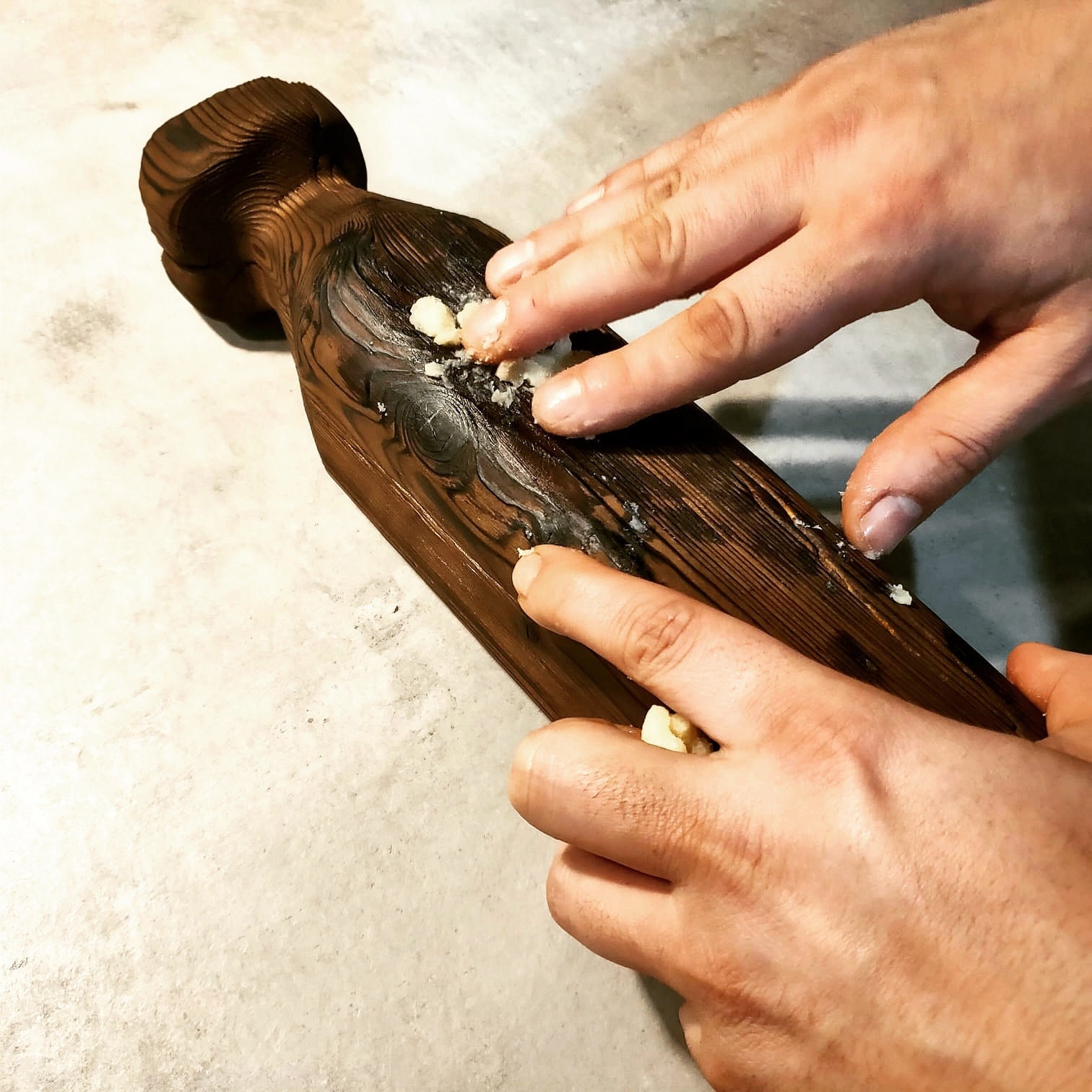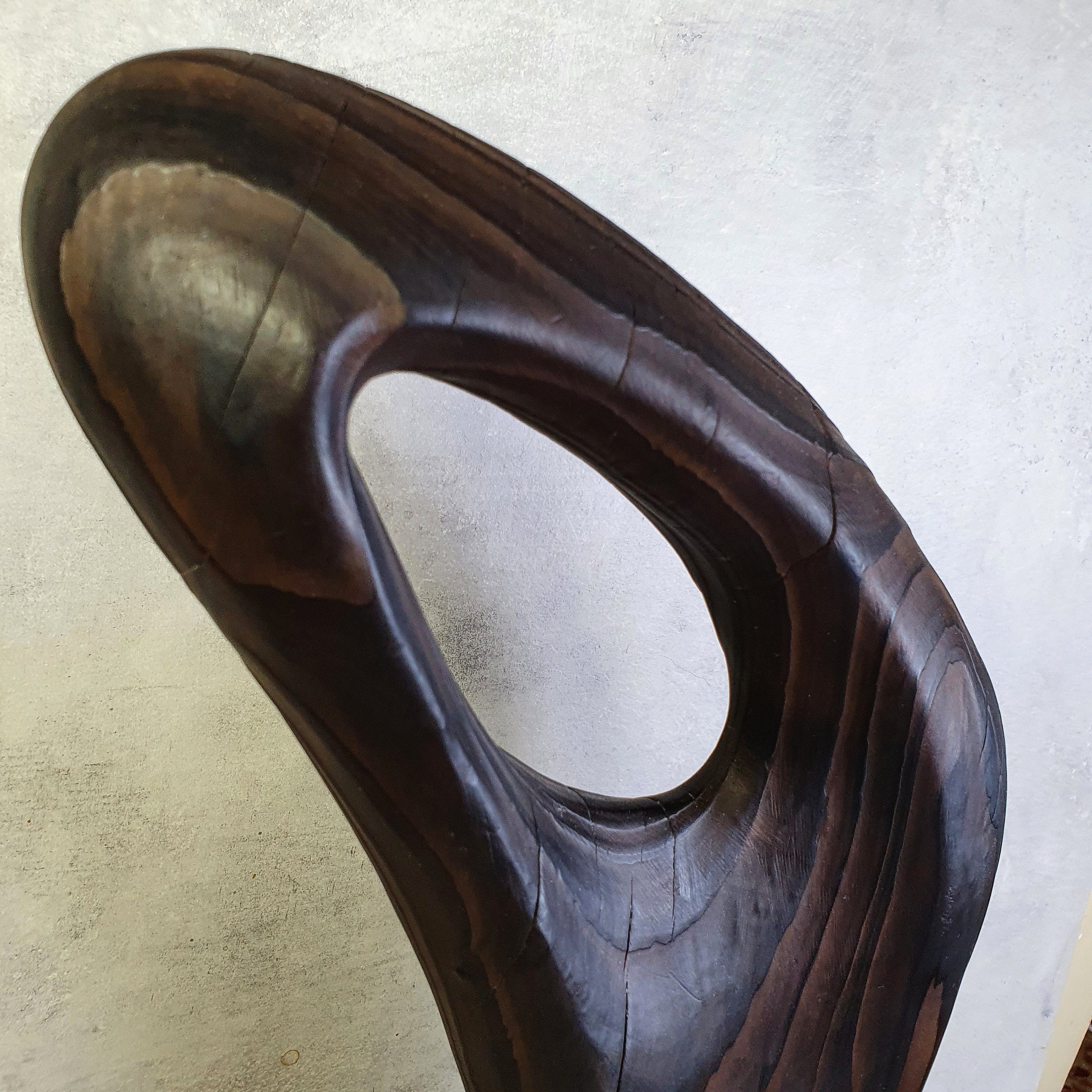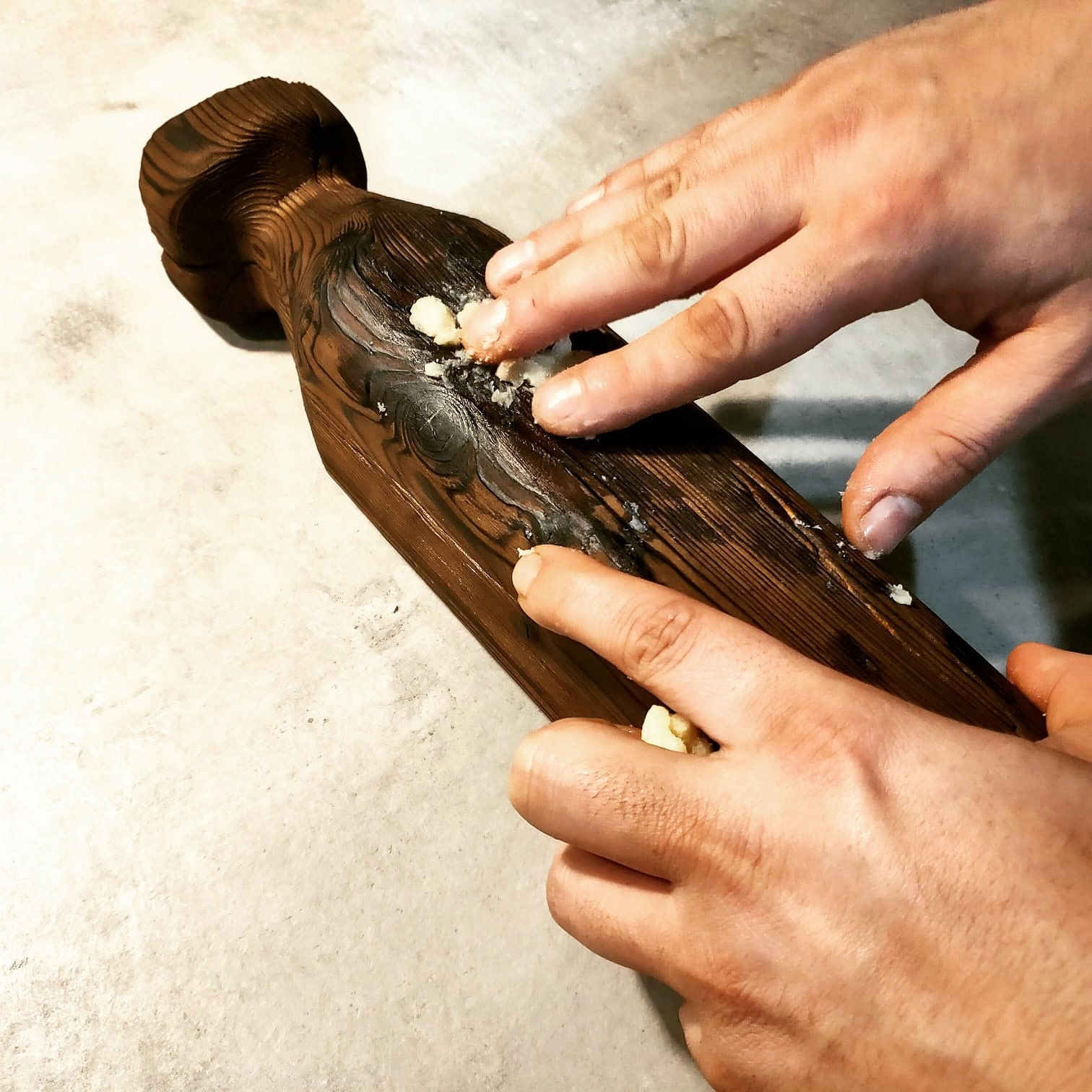Beeswax
Beeswax is a natural wax produced by bees of the genus Apis.
The wax is secreted by bees of a specific age in the form of thin flakes. The scales are produced by worker bees, aged between 12 and 17 days, by means of eight glands located in the ventral part of the abdomen, to be precise on the internal sides of the sternites (the ventral protections present in each segment of the body).
Honey bees use beeswax to build the hexagonal cells of their honeycomb, where the larvae are grown and honey and pollen are deposited.
Historical uses
Beeswax has been used since ancient times; traces of it have been found in the paintings of the Lascaux cave and in the Egyptian mummies. The Egyptians also used it in the construction of ships. In the Roman period, beeswax was used to isolate the wall paintings from the water and was one of the materials used to make the portraits of the mummies of Fayum (with the encaustic technique). In the Middle Ages it was considered of sufficient value to become a form of currency. More recently it has found use as a modeling material, as a component of sealing wax and cosmetics. Beeswax is also the traditional material from which the mouthpieces of didgeridoos and the frets of Filipino kutiyapi (a type of lute) are made. (WKP)
Benefits for wood
Beeswax gives protection and shine to the surface of the wood, highlighting its magnificent veins.
My recipe
This is the recipe I use to prepare the wax to be applied to my Totustotems.
Necessary material:
• Gas or electric stove
• Small saucepan for making a bain-marie
• Graduated container
• Containers to store our wax
Ingrediants:
• 100 ml virgin beeswax (melted in a bain marie)
• Cooked linseed oil ml 100
• Essence of turpentine 100 ml
Method
1. Put the saucepan with the water on the stove until it boils (for the quantity, remember that later we will have to insert the graduated container).
2. Once it has boiled, we will turn off the stove.
3. Insert the graduated container into the water with granules or flakes of beeswax and mix, until reaching 100 ml of liquid wax
4. Now Move the measuring cup with the liquid wax away from the stove and add 100ml of turpentine essence and 100ml of cooked linseed oil. We mix.
5. The temperature difference will have made the solution grainy, so put the measuring cup back into the saucepan with the water and turn on the stove to minimum.
6. We mix and in a short time the solution will be homogeneous.
7. Pour into containers (well made of metal or thick plastic).
Let it cool and we will have our beeswax quickly and easily for the protection and enhancement of our wooden objects.
Dean Marino (Marino Piotti)


La cera d'api è una cera naturale prodotta dalle api del genere Apis.
La cera è secreta dalle api di una ben determinata età in forma di sottili scaglie.
Le scaglie sono prodotte dalle api operaie, di età compresa tra i 12 e i 17 giorni, mediante otto ghiandole situate nella parte ventrale dell'addome, per la precisione sui lati interni degli sterniti (le protezioni ventrali presenti in ogni segmento del corpo).
Le api mellifere usano la cera d'api per costruire le celle esagonali del loro favo, dove vengono cresciute le larve e depositati miele e polline.
Utilizzi storici
La cera d'api viene usata sin dall'antichità; ne sono state rinvenute tracce nei dipinti della grotta di Lascaux e nelle mummie Egizie. Gli Egizi la utilizzavano anche nella costruzione delle navi. Nel periodo Romano la cera d'api serviva per isolare dall'acqua i dipinti murali e costituiva uno dei materiali realizzativi dei ritratti delle mummie di Fayum (con la tecnica dell'encausto). Nel Medioevo era considerata di valore sufficiente per diventare una forma di valuta. Più recentemente ha trovato uso come materiale modellante, come componente della cera sigillante e dei cosmetici. La cera d'api è anche il materiale tradizionale con cui vengono costruiti i bocchini dei didgeridoo e i tasti dei kutiyapi filippini (un tipo di liuto). (WKP)
Benefici per il legno
La cera d’api dona protezione e lucentezza alla superficie del legno mettendone in risalto le magnifiche venature.
La mia ricetta
Questa è la ricetta che uso per preparare la cera da applicare ai miei Totustotem.
Materiale necessario:
· Fornello a gas o elettrico
· Pentolino per fare bagno maria
· Contenitore graduato
· Contenitori per conservare la nostra cera
Ingredienti:
· Cera d’api vergine ml 100 (sciolta a bagno maria)
· Olio di lino cotto ml 100
· Essenza di trementina ml 100
Procedimento
1. Mettere il pentolino con l’acqua sul fornello fino al bollore ( per la quantità ricordate che in seguito dovremo inserire il recipiente graduato).
2. Raggiunto il bollore spegneremo il fornello.
3. Inseriamo il recipiente graduato nell’acqua con granuli o scaglie di cera vergine e mescoliamo, fino a raggiungere i 100 ml di cera liquida
4. Ora Spostiamo il recipiente graduato con la cera liquida lontano dal fornello e aggiungiamo 100ml di essenza di trementina e 100 ml di olio di lino cotto. Mescoliamo.
5. La differenza di temperatura avrà reso la soluzione granulosa, quindi rimettiamo il recipiente graduato nel pentolino con l’acqua e accendiamo il fornello al minimo.
6. Mescoliamo e in breve tempo la soluzione sarà omogenea.
7. Versiamo nei recipienti (van bene di metallo o plastica spessa) .
Lasciamo raffreddare e avremo in modo semplice e veloce la nostra cera d’api per la protezione e la valorizzazione dei nostri oggetti in legno.
Dean Marino (Marino Piotti)

